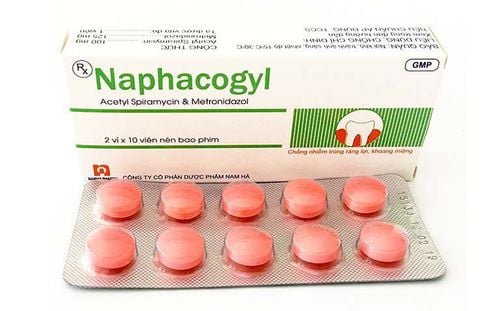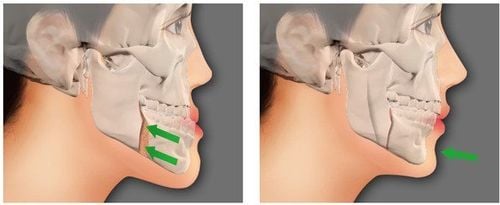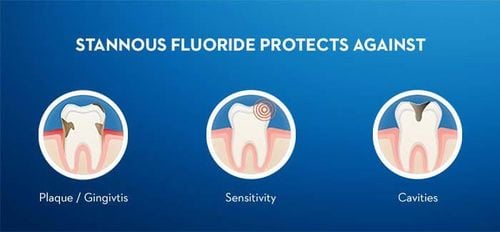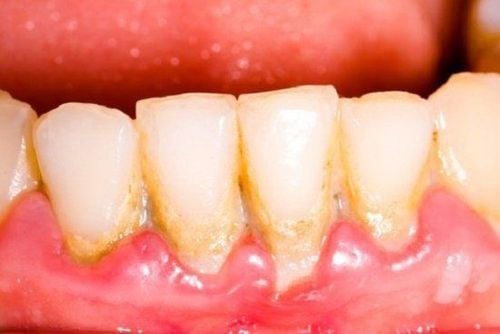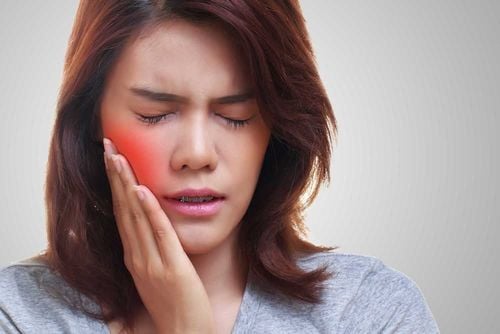This is an automatically translated article.
You should floss to remove food particles and plaque from your teeth that a toothbrush cannot reach. Thereby, reducing the risk of bad breath, tooth decay and other oral diseases.
1. What is dental floss?
Dental floss is a small, thin, soft wire designed to thread between teeth, helping to remove plaque and food particles that a toothbrush can't reach, preventing the risk of tooth decay and cavities. gum diseases.
2. What are the benefits of dental floss?
2.1. Flossing Removes Plaque Plaque is a colorless, sticky film that adheres around and between teeth and along the gum line. They form when bacteria in the mouth combine with starchy or sugary foods and drinks, which release acids that break down carbohydrates.
If you do not brush your teeth, bacteria, acids and carbohydrates can combine to form a layer of plaque on, around the teeth and gum line, which can gradually form tartar, attacking tooth enamel causing decay teeth and gum diseases.
Regular flossing can help remove food particles around the teeth, as well as the plaque accumulated between the teeth, preventing oral diseases.
2.2. Decreasing the risk of tooth decay Tooth decay occurs when small holes are formed on the surface of the enamel layer, the more plaque on the teeth, the higher the risk of tooth decay. Flossing at least once a day can help remove food particles and plaque build-up and reduce the risk of tooth decay.
2.3. Helps prevent gingivitis Gingivitis is the early stage of gum disease, with the most obvious manifestation being bleeding when brushing or flossing. If left untreated, it can cause periodontitis, which causes gums to recede to expose the roots of the teeth, increasing the risk of other oral diseases.
Brushing twice a day and flossing once a day can help reduce the risk of gum disease. In addition, you should also go to the dentist for cleaning and screening for oral diseases every 6 months.
2.4. Flossing reduces bad breath Flossing effectively prevents bad breath by removing food particles that are starting to break down and plaque that has built up around or between teeth.

Có thể giảm hôi miệng khi bạn sử dụng chỉ nha khoa đúng cách
2.5. Improves Heart Health Good oral hygiene is not only beneficial for your teeth and gums, but it is also beneficial for heart health. Studies have shown that people who adhere to high standards of oral hygiene have a reduced risk of atrial fibrillation and heart failure. Flossing is a simple, low-cost way to help promote oral hygiene and heart health.
3. How often and when to floss?
You should floss at least once a day before brushing. Flossing helps remove food particles and plaque around the teeth, brushing then helps remove them from the teeth and gums. Not recommending when to use, you can floss in the morning when you wake up or at night before going to bed depending on your personal preference.
4. Types of dental floss
Standard floss usually has two types, that is with wax and without wax, there is no difference in the effectiveness of use. If the teeth are lined and crowded, waxed floss can be a good choice for easily threading through tight spaces.
Dental floss also comes in the form of dental tape, which is wider, flatter and works well with teeth with gaps, not tight.
Super soft floss can be the best choice for people with braces with stiff, spongy, regular silk fibers located at the beginning, middle and end that are flexible in removing plaque on braces.
5. What about bleeding gums when flossing?
When you first start flossing, your gums may soften and bleed a little. Continue to floss as directed by your dentist, the bleeding should stop as the gums become healthier.
If you still have frequent bleeding after a few days, see your dentist to be checked that you are flossing correctly.
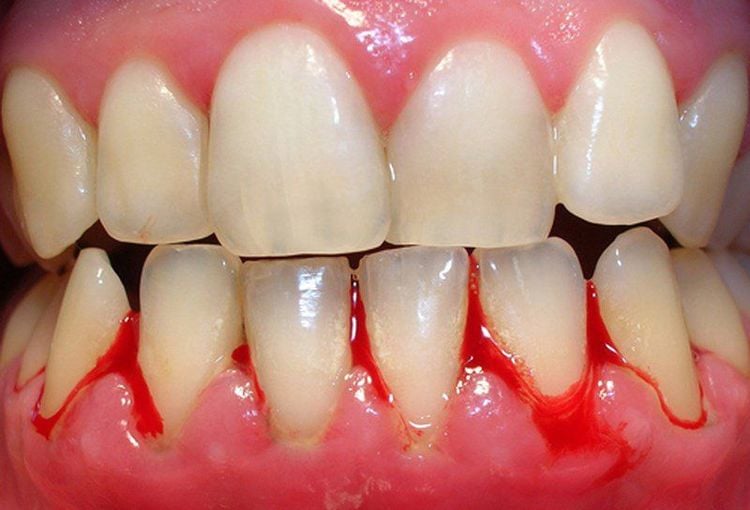
Dùng chỉ nha khoa bị chảy máu nướu thì bạn có thể hỏi ý kiến bác sĩ nha khoa
6. Other oral hygiene measures?
Flossing at least once a day is just one step in a healthy oral hygiene routine. For optimal oral health, you need to combine other measures such as:
Brush your teeth at least 2 times a day using gentle circular motions; Use toothpaste that contains fluoride; Use a soft-bristled brush to avoid hurting the gums; Brush your tongue to remove bacteria; Consider using a fluoride mouthwash; Replace toothbrush or toothbrush head every 3 to 4 months; Drink a glass of water after eating or drinking sugary drinks; Eat a balanced diet that includes plenty of fruits and vegetables, and limit your consumption of sugary foods and drinks; Visit your dentist twice a year for a routine cleaning and checkup. In short, you should floss at least once a day before brushing your teeth. Flossing helps remove food particles and plaque around the teeth, brushing then helps remove them from the teeth and gums. There is no recommendation on when to use, you can floss in the morning when you wake up or at night before going to bed depending on your personal preference.
Please dial HOTLINE for more information or register for an appointment HERE. Download MyVinmec app to make appointments faster and to manage your bookings easily.
Reference sources: webmd.com, nhs.uk, healthline.com



